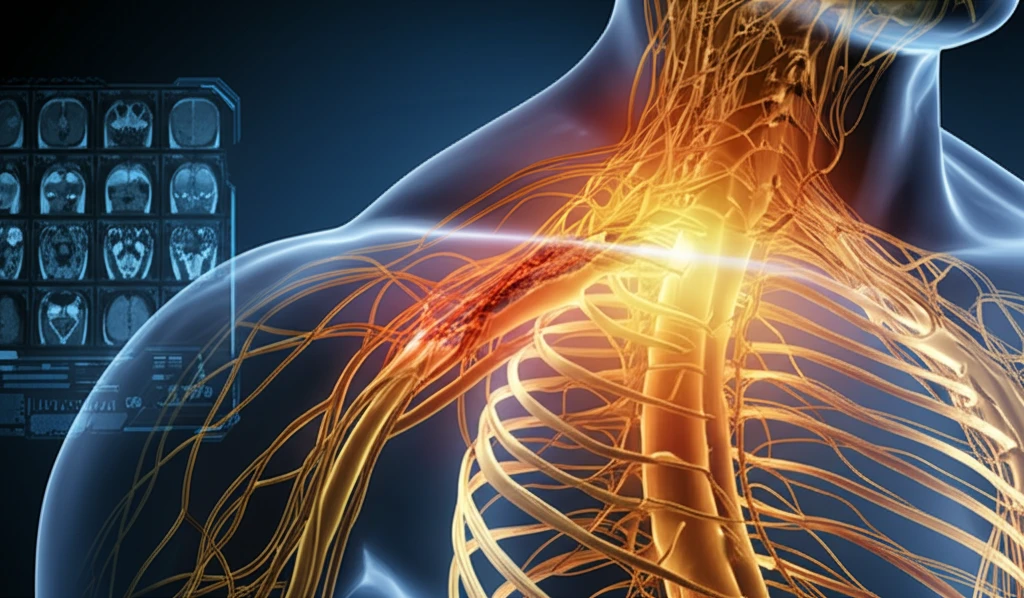
Brachial Plexus Injuries: Can MRI Scans Accurately Detect Nerve Root Damage?
"A new study examines the effectiveness of magnetic resonance imaging (MRI) in diagnosing root avulsions in adults following traumatic brachial plexus injuries."
Traumatic brachial plexus injuries can occur from traffic collisions or high-impact accidents and often affect adults, leading to significant disability. These injuries involve damage to the network of nerves (the brachial plexus) that controls movement and sensation in the arm and hand. The type and severity of the injury are crucial for determining the best course of treatment and predicting recovery.
Injuries are generally classified as either pre-ganglionic or post-ganglionic. Post-ganglionic injuries, such as nerve ruptures or attenuations, typically have a better prognosis because they can be repaired with surgery or nerve grafts. Pre-ganglionic injuries, also known as root avulsions, involve the nerve roots being torn away from the spinal cord. These injuries are more complex and often require nerve transfers from other parts of the body, as re-implantation of the avulsed root is often unsuccessful.
Identifying root avulsions is therefore critical because it significantly alters the surgical plan and the expected outcome. Doctors often use exploratory surgery to assess the damage, but imaging techniques like magnetic resonance imaging (MRI) are becoming increasingly popular for pre-operative assessment. MRI offers detailed images of the soft tissues in the brachial plexus, but questions remain about its accuracy in detecting root avulsions.
MRI Accuracy in Diagnosing Root Avulsions: What the Study Shows

A recent study published in the Journal of Hand Surgery (European Volume) investigated the accuracy of MRI in detecting root avulsions in adults with traumatic brachial plexus injuries. The study retrospectively analyzed data from 29 male patients who underwent both MRI and exploratory surgery at a single institution between 2008 and 2016. The goal was to determine how well MRI results matched the findings during surgery, which is considered the gold standard for diagnosis.
- Root Avulsion: Nerve roots torn away from the spinal cord.
- Pre-ganglionic Injury: Injury occurring before the nerve cell body.
- Post-ganglionic Injury: Injury occurring after the nerve cell body.
- Pseudomeningocele: Fluid-filled sac that forms when a nerve root is torn from the spinal cord.
- MRI (Magnetic Resonance Imaging): A detailed imaging technique using magnetic fields and radio waves to create images of the body's soft tissues.
Implications for Patients and Future Research
While MRI is a valuable tool for assessing brachial plexus injuries, this study highlights its limitations in accurately diagnosing root avulsions. The findings suggest that doctors should not rely solely on MRI results when making treatment decisions. Surgical exploration, performed by an experienced surgeon, remains the most reliable method for determining the extent of the damage and planning the appropriate reconstructive procedures. Further research is needed to improve the accuracy of MRI and other imaging techniques for diagnosing brachial plexus injuries. This could involve using higher-resolution MRI scanners, advanced imaging sequences, or combining MRI with other diagnostic tests, such as diffusion tensor imaging or hyperpolarization methods. Ultimately, the goal is to provide patients with more accurate diagnoses and better treatment outcomes.
